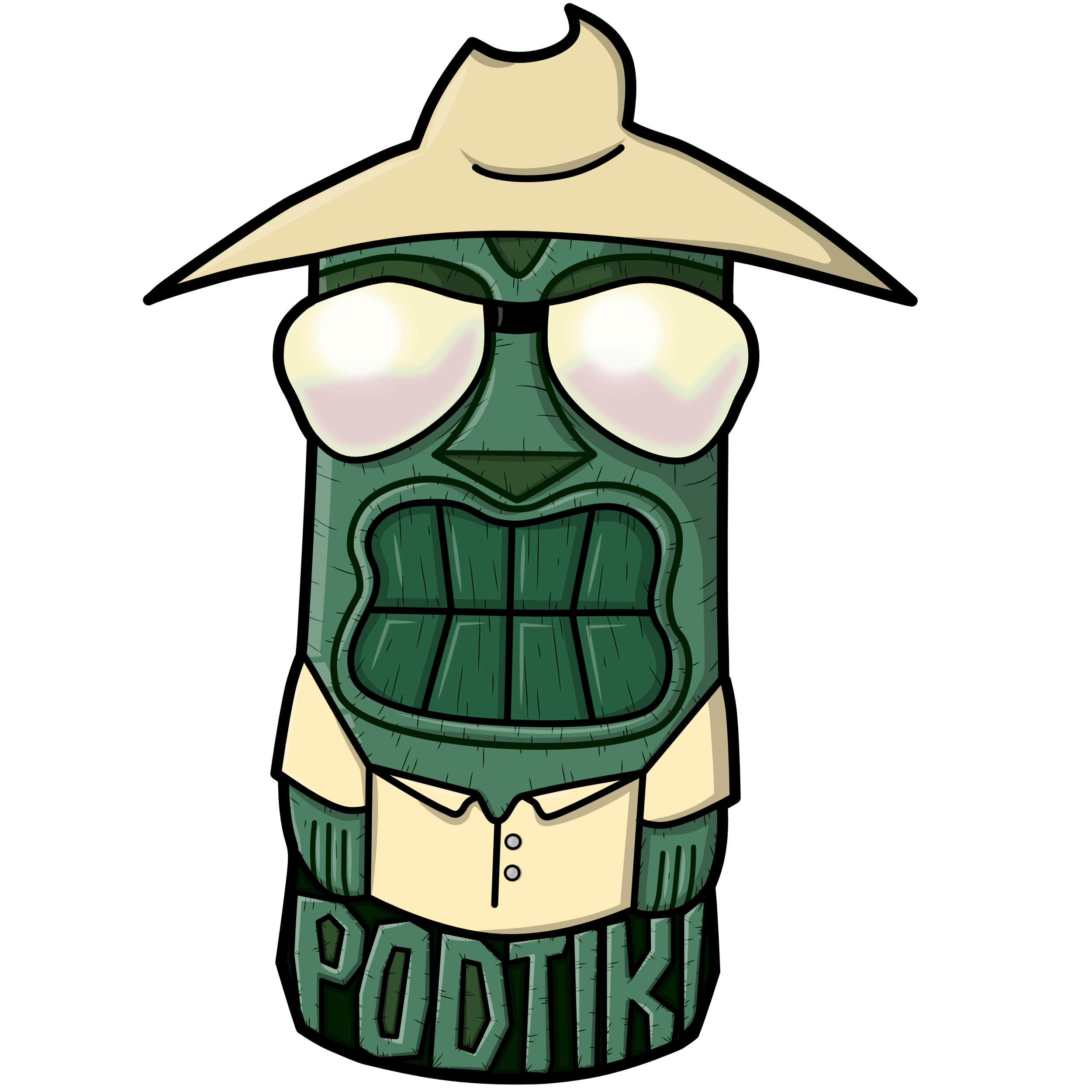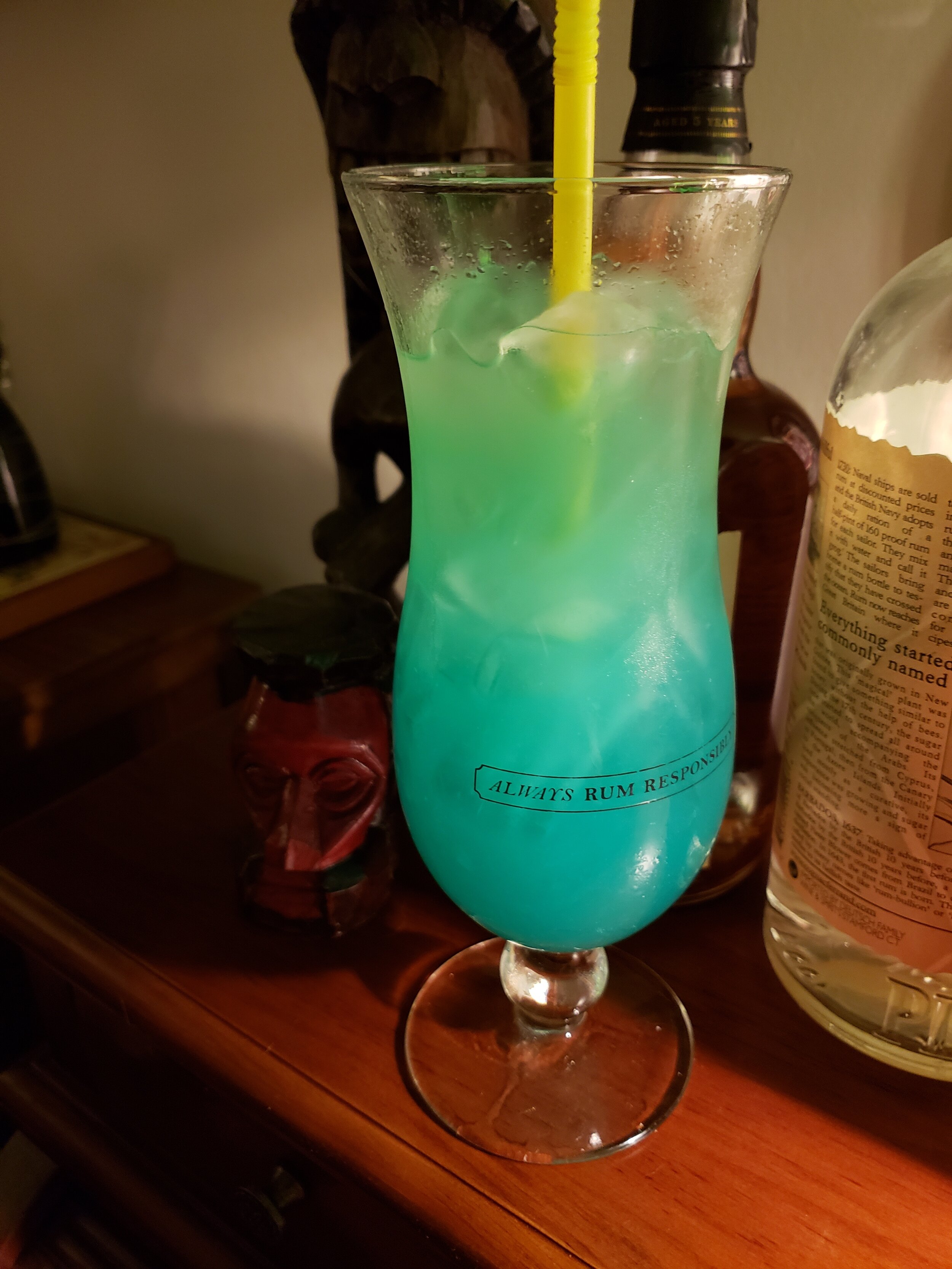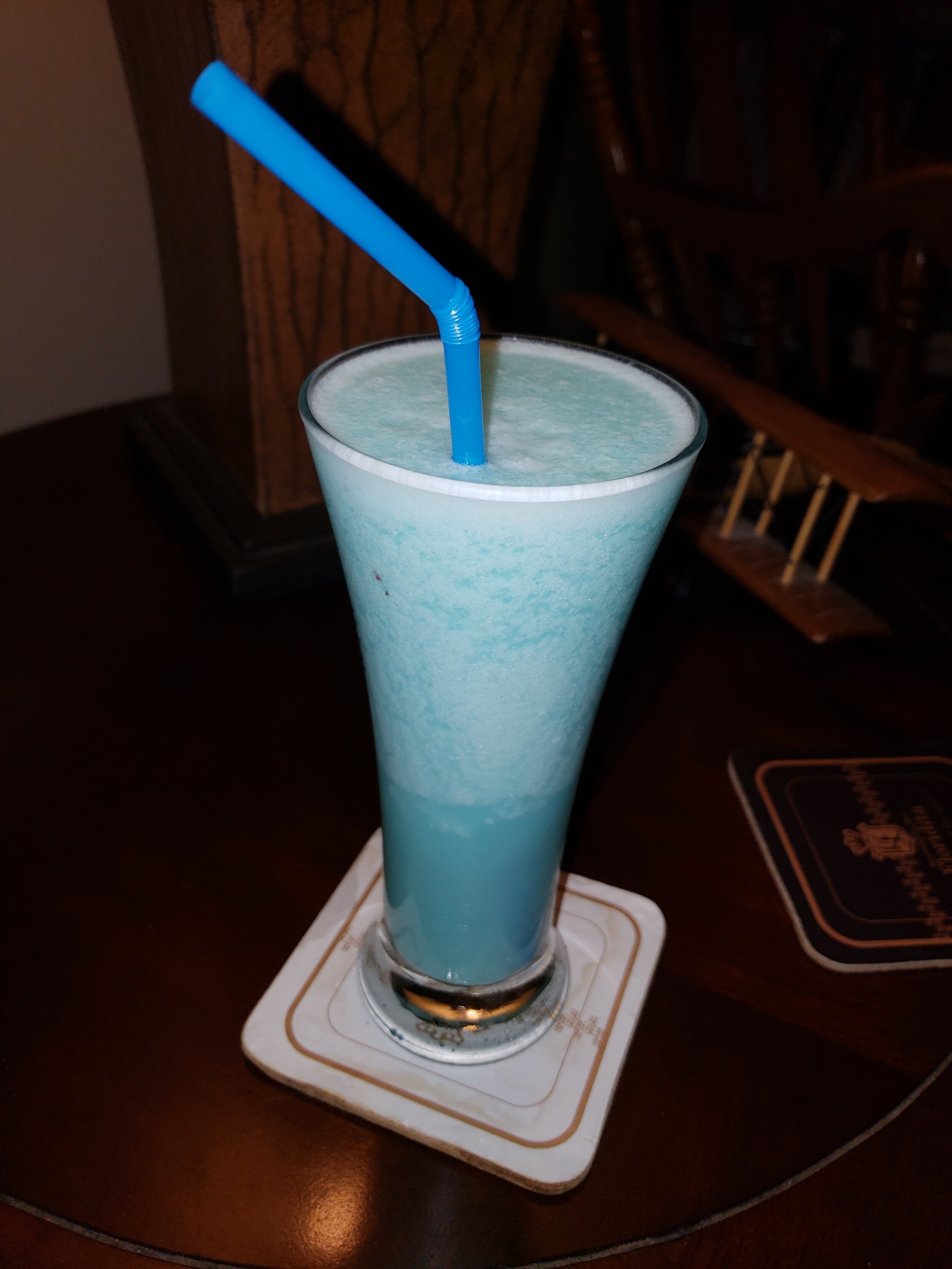While Don the Beachcomber and Trader Vic were awash in the fecundity of their newfound Tiki culture, capitalizing on faux exotic escapism and mystical prestidigitation, the gods were stirring over Waikiki. There, on a Pacific island, the traditional flavors of Hawaii began co-mingling with the newfound favor for tropical indulgence. Coconuts and pineapples danced with asian spices, Caribbean rums, Russian vodka, and British juniper. While Havana writhed in revolution America’s wealthy elite found a new playground in 1950’s pre-statehood O’ahu. They also found something else, or someone, rather. With respect to Don and Vic there was another man who could be credited with promulgating the era of Polynesian Pop. Ladies and gentlemen, allow me to introduce Harry Yee.
The Tiki torch flame of innovation was not lost on the South Pacific islands whose origins this newly described culture was often attributed. Harry Yee’s 30 years at the Hawaiian Village Hotel was spent creating some of the most popular concoctions in tropical cocktalia, the most famous of which is - the Blue Hawaii.
Diving in to my research of Tiki and tropical drinks I’ve run across the obvious big ones, your Mai Tai, your Zombie, your Daiquiri. Complex, flavorful, rich in both profile and history. Others fall into the fruity “Boat Drinks” category, while others seem too simple to compel an entire article. In fact, that is why I initially chose the Blue Hawaii as our next recipe. I thought it would be an easy palate cleanse before diving into the burdensome and controversial Zombie. Yet, upon a cursory dive I quickly found the story of Harry Yee and the often confused Blue Hawaiian cocktail. Upon mixing up a few of these at the house for my fiance and I, (yeah, that happened since the last article), I also discovered a quaint and delicious unexpected depth in these two drinks.
"Those days when tourists came in, they said, 'Give me a Hawaiian drink.' We didn't have any Hawaiian drinks. There were no such things as exotic drinks. Or tropical drinks from Hawaii." Harry Yee needed to invent the Hawaiian cocktail. He got a little help from venerable Dutch distillery Bols. You see, Bols wasn’t getting much love their Blue Curacao variant and approached Yee for some of that much needed island intrigue. Yee was no stranger to Tiki ingenuity. After all, he was the first to appropriate Hawaii’s orchid as a garnish. Yee is purported to be the first to use paper umbrellas, a defining staple in tropical drink accoutrement. The man wasn’t afraid to experiment either, see the Tropical Itch cocktail which came with a bamboo back scratcher towering out of a hurricane glass.
The Blue Hawaii suffered many iterations while Yee attempted to find that perfect balance of tropical easy-to-sip but oomph-packing enough to compete with boozy Tiki drinks; all while visually invoking the spirit of the Hawaiian islands. He did not disappoint.
The Blue Hawaii’s name didn’t come from the Elvis movie as many would be inclined to believe. Instead it’s said to take its namesake from the titular Leo Robin song composed for Bing Crosby’s 1937 film, Waikiki Wedding. The marrying of Harry Yee’s expertise, local flair, and time honored spirits make this cocktail a bit of a Waikiki wedding itself.
So, on that note - let’s make a drink!
Harry Yee’s original Blue Hawaii recipe calls first for the proper tropical barware. For this we reach for a hurricane glass. If you don’t have one on hand a stemmed beer glass would work or even a pilsner. The idea is we want something tall and clear. No matter how cool your ceramic mermaid tiki mug is (and I know, I have one), to make this drink without being able to admire the seafoam turquoise splendor would be like making love to a beautiful woman with a blindfold on.
Per Harry’s style we’re going to fill that glass with crushed ice and pour in 3 oz fresh pineapple juice. That’s not neon yellow Dole from a can. Grab yourself a pineapple, cut the rind off - making sure you get all those little thorny brown dimples out, and blend it to a liquid. Trader Joe’s sells a not from concentrate unsweetened pineapple juice. Save yourself the chopping and grab that.
Add 1 oz sweet & sour mix. There are various recipes for making your own mix, and believe how I shutter at the notion of using any kind of pre-mix at all, but since it’s only 1 oz just grab whichever high end organic stuff you can find. Larger liquor stores usually carry decent mixes. I would shy away from grocery store stuff.
½ oz Blue Curacao. Bols is pretty good and affordable, but not on every shelf. It won’t kill the drink to use the more widely pervasive Dekuyper.
The mixing of spirits to tease out new flavors is no stranger to tiki drinks, but so far we’ve only encountered the demon rum being implemented. This is the first cocktail in our journey through the barony of belligerence that not only prominently features curacao, usually an accompaniment, but blends vodka with rum. Yee doesn’t specify a brand but I always go for my bottle of Reyka Icelandic vodka. It has a warm small batch craft flavor. Minimal burn with hints of humidity and sweet vegetation, along with a pleasant price tag, makes this the perfect vodka for mixing or highlighting a martini. On the other hand, our Polynesian progenitor does have a preference on rum. Light Puerto Rican. “It’s a better taste.” Says Yee. Hear Yee, Hear Yee! We’re going to use even amounts of 3/4 oz of our spirits.
For reference that’s:
3/4 oz Vodka
3/4 oz Light PR Rum
3 0z Pineapple Juice
1/2 oz Blue Curacao
1 oz Sweet & Sour Mix
Stir gently - like everything is done in Hawaii. Garnish with a pineapple slice and orchid flower. Aloha… The result is an oceanic blend of sultry south Pacific pacification complicit in dreams of island-pineapple-love-sweet-citrus-sugar-cane-hula-girl in a glass. Rumor has it Yee checked the accuracy of his concoction by holding it up towards the beach. If it matched the color of the Pacific Ocean, it was mixed right.
Fresh pineapple truly brings out the essence of this cocktail. The sweet & sour has time to shine behind a vodka/rum partnership that’s been bringing wahine's and hoale’s together for decades. Thank you Mr. Yee.
It sure has been nice to finally cover a cocktail with one distinct agreed upon origin. But alas, you know there has to be a thousand recipe variants because I apparently have chosen a topic of abject opinion to write about. Well, like the saying goes, we all have one of those, right? So, here’s my recipe.
Ok, we don’t all have access to fresh pineapple all year round. Most of us though can acquire those little cans of Dole. My version keeps with the original but because canned pineapple juice is thicker and sweeter we have to adjust a little. While nothing beats fresh this recipe will still manage to infect your spirit with a little liquid aloha. In a hurricane glass filled with crushed ice pour 2 oz canned Dole pineapple juice, 1 oz of fresh lemon juice (helps cut the sweetness of the pineapple), 1 oz Blue Curacao, ¾ oz Reyka vodka, and ¾ oz Bacardi Superior light PR rum. Stir and drift away.
To bolster that experience find a nice Hawaiian music playlist or some Exotica by Martin Denny. Fruity cocktails like this pair nicely with a mild to medium bodied cigar. I recommend the KBF by Principle Cigars or whatever your favorite Connecticut wrapper stick.
Alright so I guess I’ll see ya’ll next ti- , Wait Wait Wait! What’s that you say? This isn’t the drink you thought you were making? Coconut, you say? Frozen? Well, you have mistaken this original Harry Yee Blue Hawaii for the similarly, very confusingly named, Blue Hawaiian!
Tiki culture is no stranger to re-appropriation. In fact, it’s kind of built on it. The Blue Hawaiian cocktail not only borrows its name from the original Harry Yee drink, but its flavor profile from another very famous tropical libation. For the Blue Hawaiian is very much Pina Colada adjacent. There’s not much available in the way of origin story for this drink but it pops up regularly amid the litany of tikidom. Beachbum Berry’s Blue Hawaii subs out the sweet & sour for lemon juice and adds coconut cream essentially transforming it to a Blue Hawaiian. I know, very confusing, but stay with me. I get the impression this is one of those cocktails that evolved naturally over time due to a false necessity. Basically, there’s no need for this drink, but here it is.
¾ oz Light Puerto Rico rum. ¾ oz Vodka. ¾ oz Blue Curacao. 2 oz fresh pineapple puree. ¾ oz coconut cream, and ½ oz fresh lemon juice. Blend with 1 cup ice and pour into a large cocktail glass or snifter. Again, anything clear enough to admire the color.
The result is a smooth creamy seaweed colored frozen concoction. The spumescent headiness leaves a dripping froth down the glass with each sip. It’s reminiscent of sea foam washed up by the tide and left on the beach. Pineapple puree combined with the creamy coconut is offset by sour lemon and the bright citrus notes of curacao. Rich and frothy, this cocktail definitely has all the makings of a tropical try hard. Honestly, I’m not a fan. It’s a little too rich and frothy. Too creamy for my liking.
I prefer my tiki or tropical cocktails a little more fruity and tart or spirit forward. This is for sure a drink created solely for the look and to appeal to as mass an audience as possible. Sure, it’s delicious. Who doesn’t like pineapple and coconut? But there’s little in the way of character or personality within this drink. Although, it fits perfectly within the hands and hearts of pasty overweight tourists rolling around drunk on the lido deck of a cruise ship while their kids shit up the pool. Plus, who wants cream in a tropical drink? “Hmm, it’s a lovely humid day in the Caribbean. You know what would be great right now in this heat? Some heavy cream!” ...Gross.
Thus, if you’re in the mood for some Hawaiian blues I would sololy recommend the original Harry Yee Blue Hawaii. It’ll add a little tropical tide to your weekend patio escapism without the incapacitating effect of some proofier Tiki drinks. Just remember, as Mr. Yee said, to always “serve with aloha!”



